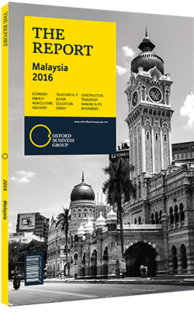US President Barack Obama, on the Trans-Pacific Partnership (TPP) and regional cooperation: Viewpoint
 Barack Obama
Barack Obama South-east Asia holds a special place in my heart. As a boy, I lived in Indonesia, where for many years my mother dedicated herself to empowering rural women. And as president, I’ve worked to deepen America’s engagement in this region. Four ASEAN nations are already part of the TPP: Brunei, Malaysia, Singapore and Vietnam. Along with the US, it also includes Australia, Japan, New Zealand, Canada, Mexico, Peru and Chile. When implemented, it won’t just boost trade and support jobs in our 12 countries, it will help set stronger rules for trade across the Pacific and Asia.
The TPP is a win for the kind of trade that companies and workers in our countries need to compete in the 21st century. It makes sure that globalisation is working for us, and not against us. The TPP strengthens protections for intellectual property, so innovations are less likely to be stolen or pirated. It encourages more trade in services, which is a larger and larger proportion of our economies and our workforces. As the first trade agreement to truly embrace the digital economy, it encourages e-commerce. It simplifies Customs, which makes it easier for all companies to export, especially small and medium-sized businesses that create many of the jobs in our countries and have more difficulty navigating through a lot of bureaucracy in trying to export to other countries.
The TPP will help build greater trust and cooperation among nations. We’ve long understood that trade can help bring countries and regions closer. Take the example of the post-World War II era, where the free nations of Europe set out to bind themselves together in what would become the EU. Over many decades, the US helped fashion the international institutions and global trading system that have stitched our economies together and helped prevent another war between major powers. There is a link between economic security and national security, and that’s at the heart of ASEAN. So the TPP will help to advance the economic integration that underwrites peace and stability in for the countries of the Pacific region.
The TPP will also bind the US even closer to some of our strongest allies in Asia. It’s no coincidence that around the world many of our treaty allies are also some of our strongest trading partners. There’s a virtuous circle – our alliances are the foundation for our security, which becomes the basis of our prosperity, which allows us to invest in the sources of our strength, including our alliances. The US has treaty obligations to the security of our allies, Japan and Australia, a long-standing defence relationships with New Zealand. With greater trade and ties under the TPP, we and our allies in the Pacific will be investing in our mutual security for generations to come.
Finally, the TPP will allow the US to forge deeper partnerships with countries that are playing a rising role in this region. In Malaysia, new starts-ups and investments in entrepreneurship have made this country a hub of innovation. Vietnam has one of the region’s fastest-growing economies. With greater prosperity comes greater responsibility, and both Malaysia and Vietnam are, indeed, doing more. So the US is working with both countries to ensure maritime security, to uphold the freedom of navigation and to ensure that disputes in the region are resolved peacefully, through dialogue. And as they grow their economies in the coming decades under the TPP, Malaysia and Vietnam will be able to make greater contributions to regional security.
That’s the progress – the opportunity, the growth, the innovations – that we can unleash. That’s why I’m grateful for our work together and so optimistic about our shared future.
The above is an abridged version of President Obama’s speech on November 21, 2015 at the ASEAN Business and Investment Summit in Kuala Lumpur.
You have reached the limit of premium articles you can view for free.
Choose from the options below to purchase print or digital editions of our Reports. You can also purchase a website subscription giving you unlimited access to all of our Reports online for 12 months.
If you have already purchased this Report or have a website subscription, please login to continue.

